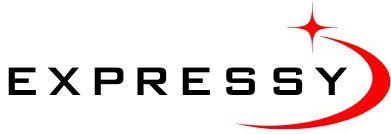The modern workplace has undergone a fundamental transformation, with organizations worldwide embracing technology-driven solutions to manage their most valuable asset – their workforce. Human resource management has evolved from traditional paper-based processes to sophisticated digital ecosystems that streamline operations, enhance employee experiences, and drive organizational success. This technological revolution has created unprecedented opportunities for businesses to optimize their human capital management while reducing administrative burdens and improving compliance.
Contemporary organizations are discovering that effective workforce management requires more than just tracking attendance and processing paychecks. Today’s competitive landscape demands integrated solutions that connect payroll processing with comprehensive human resource functions, creating seamless workflows that support strategic decision-making and operational excellence. The integration of artificial intelligence, automation, and cloud-based technologies has revolutionized how companies approach employee management, compensation planning, and regulatory compliance.
This digital transformation has democratized access to enterprise-level human resource capabilities, enabling small and medium businesses to compete with larger organizations by leveraging the same advanced tools and technologies. The result is a more efficient, transparent, and employee-centric approach to workforce management that drives engagement, productivity, and business growth.
Payroll Management Software
Payroll management software has emerged as a critical component of modern business operations, providing automated solutions for calculating wages, managing deductions, processing taxes, and ensuring compliance with complex labor regulations. These sophisticated platforms eliminate the time-consuming manual calculations and paperwork that once characterized payroll processing, while significantly reducing the risk of errors that can result in costly penalties and employee dissatisfaction.
Advanced payroll management software offers comprehensive features including automated salary calculations, tax withholding management, direct deposit processing, and generation of detailed payroll reports. These systems integrate seamlessly with time and attendance tracking, ensuring accurate compensation based on actual hours worked, overtime calculations, and various pay structures including hourly, salaried, and commission-based arrangements.
Modern payroll platforms provide real-time visibility into payroll costs, enabling managers to monitor labor expenses and make informed decisions about staffing levels and compensation strategies. These tools offer customizable reporting capabilities that help organizations track payroll trends, analyze costs by department or project, and prepare for budgeting and forecasting activities.
Compliance management represents a crucial advantage of payroll management software, with systems automatically updating tax rates, labor law requirements, and regulatory changes. This ensures organizations remain compliant with federal, state, and local regulations while reducing the administrative burden on HR teams and minimizing the risk of costly compliance violations.
Employee self-service portals integrated with payroll management software empower workers to access their pay stubs, tax documents, and payroll history online, reducing administrative requests and improving employee satisfaction through increased transparency and accessibility.
Payroll HRMS Software
Payroll HRMS (Human Resource Management System) software represents the next evolution in workforce management technology, combining comprehensive payroll processing capabilities with integrated human resource functions. These unified platforms create seamless connections between payroll, employee records, benefits administration, performance management, and strategic HR planning, enabling organizations to manage their entire employee lifecycle from a single system.
Integrated payroll HRMS software eliminates data silos by connecting payroll information with employee profiles, job histories, performance evaluations, and benefits enrollment. This integration ensures data consistency across all HR functions while providing comprehensive insights into workforce costs, productivity metrics, and employee satisfaction levels.
Advanced HRMS platforms incorporate artificial intelligence and machine learning algorithms that automate routine tasks, predict workforce trends, and provide actionable insights for strategic decision-making. These systems can identify patterns in employee turnover, optimize compensation structures, and recommend interventions to improve retention and engagement.
Benefits administration within payroll HRMS software streamlines enrollment processes, automates deduction calculations, and provides employees with self-service access to their benefits information. This integration ensures accurate payroll processing while reducing administrative overhead and improving employee experience through simplified benefits management.
Compliance management becomes more comprehensive with integrated payroll HRMS software, as these systems can track employee training requirements, monitor certification renewals, and ensure adherence to labor laws across all HR functions. This holistic approach to compliance reduces risk and improves organizational governance.
Reporting and analytics capabilities in payroll HRMS software provide executives with comprehensive dashboards that combine payroll metrics with broader HR indicators, enabling data-driven decisions about workforce planning, compensation strategies, and organizational development initiatives.
Conclusion
The evolution toward integrated payroll and HRMS software solutions represents a fundamental shift in how organizations approach workforce management. These comprehensive platforms provide unprecedented opportunities for businesses to streamline operations, improve employee experiences, and gain strategic insights that drive organizational success and competitive advantage.
As technology continues to advance and workforce expectations evolve, companies that embrace integrated payroll HRMS solutions will be best positioned to attract top talent, optimize operational efficiency, and achieve sustainable growth in an increasingly competitive marketplace.
Frequently Asked Questions (FAQs)
1. What are the key benefits of implementing payroll management software? Key benefits include automated payroll calculations, reduced processing time, improved accuracy, enhanced compliance management, employee self-service capabilities, comprehensive reporting, integration with time tracking systems, and significant cost savings through reduced administrative overhead and eliminated manual errors.
2. How does payroll HRMS software differ from standalone payroll systems? Payroll HRMS software integrates payroll processing with comprehensive human resource functions including employee records management, benefits administration, performance tracking, and strategic HR planning. This integration eliminates data silos, provides holistic workforce insights, and enables more strategic decision-making compared to standalone payroll systems.
3. What should businesses consider when selecting payroll software solutions? Important considerations include scalability for business growth, integration capabilities with existing systems, compliance features for relevant regulations, user-friendly interfaces, mobile accessibility, security measures, customization options, vendor support quality, and total cost of ownership including implementation and ongoing maintenance.
4. Can small businesses benefit from advanced payroll HRMS software? Absolutely. Many providers offer scaled solutions specifically designed for small businesses, including cloud-based options with affordable subscription pricing. These systems help small organizations compete with larger companies by providing enterprise-level capabilities for workforce management, compliance, and strategic HR planning without requiring significant upfront investments.
5. How long does it typically take to implement payroll management software? Implementation timelines vary based on company size and complexity. Simple payroll software implementations can be completed within 2-4 weeks, while comprehensive HRMS solutions may require 6-12 weeks for full deployment. Most providers offer implementation support, data migration assistance, and training programs to ensure smooth transitions and user adoption.












